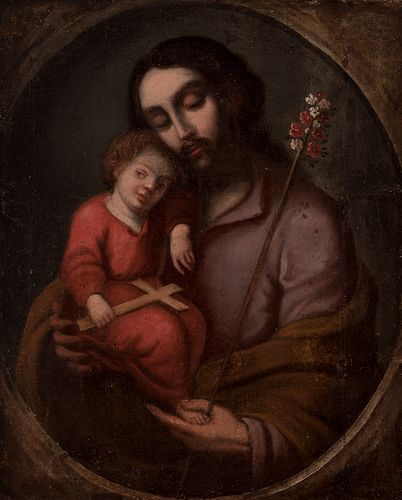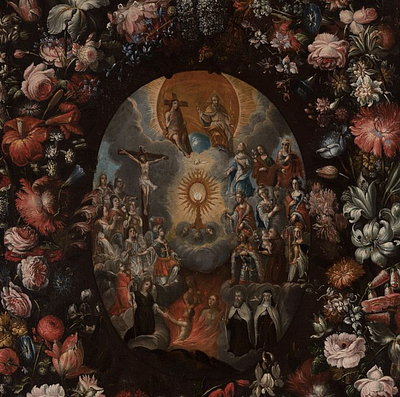Novohispanic School; second half of the XVIII century. "San José with the Child". Oil on canvas.
Lot 115
About Seller
Setdart Auction House
Carrer Aragó 346
Barcelona
Spain
Setdart Subastas was born in 2004 and is currently the first online art auction in Spain with solidity, prestige and reliability guaranteed by our more than 60,000 users. Setdart has a young, dynamic and enterprising team ready to successfully manage the purchase and sale of art works through custom...Read more
Estimate:
EUR€1,800 - EUR€2,000
$1,935.48 - $2,150.54
Absentee vs Live bid
Two ways to bid:
- Leave a max absentee bid and the platform will bid on your behalf up to your maximum bid during the live auction.
- Bid live during the auction and your bids will be submitted real-time to the auctioneer.
Bid Increments
| Price | Bid Increment |
|---|---|
| EUR€0 | EUR€10 |
| EUR€200 | EUR€25 |
| EUR€500 | EUR€50 |
| EUR€1,000 | EUR€100 |
| EUR€3,000 | EUR€200 |
| EUR€5,000 | EUR€500 |
| EUR€10,000 | EUR€1,000 |
| EUR€20,000 | EUR€2,000 |
| EUR€50,000 | EUR€5,000 |
About Auction
By Setdart Auction House
Jul 14, 2021
Set Reminder
2021-07-14 06:30:00
2021-07-14 06:30:00
America/New_York
Bidsquare
Bidsquare : OLD MASTERS
https://www.bidsquare.com/auctions/setdart-auction-house/old-masters-7202
Setdart Auction House sofia@setdart.com
Setdart Auction House sofia@setdart.com
- Lot Description
Novohispanic School; second half of the XVIII century. "San José with the Child". Oil on canvas. Presents period frame. Measures: 48.5 x 39 cm; 56 x 48 cm (frame). Inscribed in a border as an oval frame, the author presents us with a completely intimate and tender image between St. Joseph and the Child, which are placed in the center of the composition, on a dark and neutral background. St. Joseph acts as a throne for the Child, to whom he dedicates a tender caress, resting his face on the Child's head, thus alluding to his paternal-filial relationship. The Child, who is seated on his father's lap, directs his gaze towards the spectator, thus establishing a communication between the two and making him a participant in the scene. The work has no other element that distracts the viewer, except for the flowers that are the iconographic symbol of Joseph and the cross that the Child carries in one of his hands. Until the Counter-Reformation, it was common for the figure of St. Joseph to remain in the background, since he was not given any theological importance. However, after Trent, his leading role as Jesus' protector during his childhood, as a guide during his youth, was recovered, and as such he is represented here. In contrast to the tenderness, defenselessness and candor of the infant figure, St. Joseph is presented as a monumental character, typically baroque, an impression that is reinforced by the pyramidal composition of the image. Through this form of representation, the author visually enhances the decisive role as protector of the putative father of Jesus. It is worth mentioning that, during the Spanish colonial domination, a mainly religious painting was developed, aimed at Christianizing the indigenous peoples. The local painters were modeled on Spanish works, which they followed literally in terms of types and iconography. The most frequent models were the harquebusier angels and the triangular virgins, however, in the first years of the 19th century, already in times of independence and political opening of some of the colonies, several artists began to represent a new model of painting with its own identity.
- Shipping Info
-
In-house shipping available. Please inquire at admin@setdart.com.
-
- Buyer's Premium



 EUR
EUR CAD
CAD AUD
AUD GBP
GBP MXN
MXN HKD
HKD CNY
CNY MYR
MYR SEK
SEK SGD
SGD CHF
CHF THB
THB
















